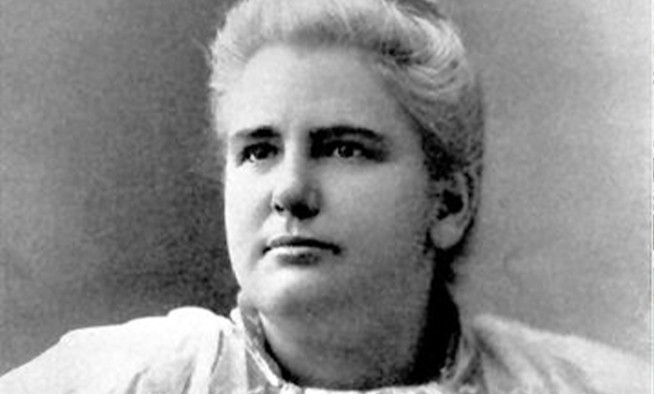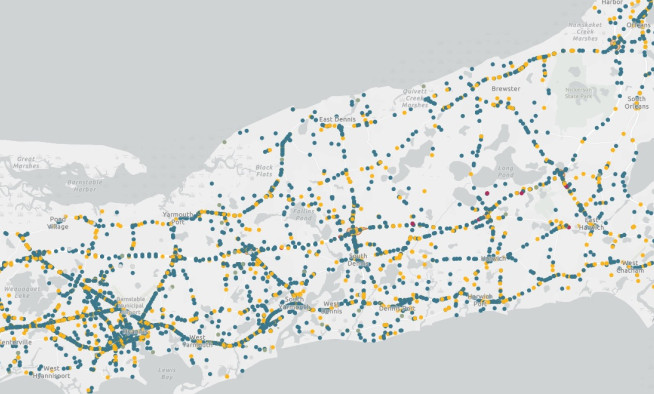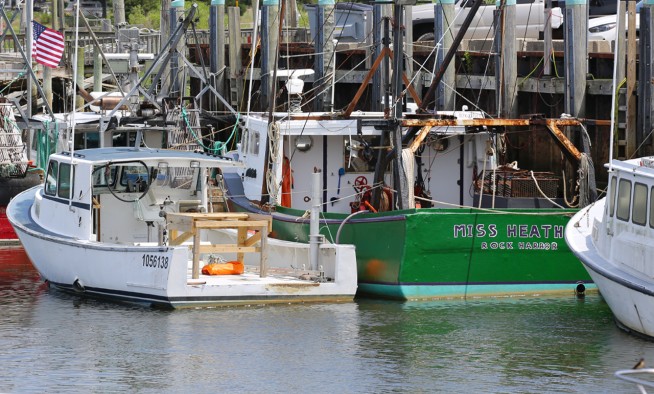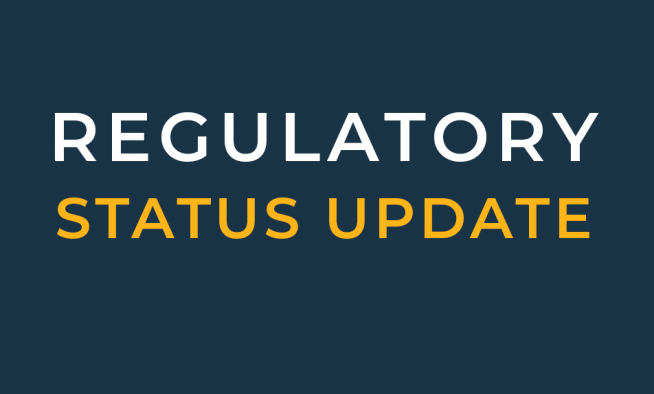Gov. Baker certifies Section 208 Plan Update, submits to EPA
COMMISSION TO HOLD CAPE-WIDE MEETING SET TO REVIEW WMA DESIGNATIONS, JUNE 24
http://capecodcommission.org/208/final – Full Plan
http://capecodcommission.org/208/summary – Summary and Introduction
http://capecodcommission.org/208/appendices – Appendices
Gov. Charlie Baker certified Cape Cod’s final Section 208 Areawide Water Quality Management Plan Update, authorizing its submission to the U.S. Environmental Protection Agency (EPA).
The Cape Cod Commission developed and drafted the 208 Plan Update. It is a watershed-based approach to restore embayment water quality on Cape Cod. The plan recommends strategies, regulatory reforms and a process for communities to reduce or eliminate excess nitrogen, the primary cause of degraded conditions.
“Nitrogen pollution in Cape waters affects not only the natural resources, but the economy and quality-of-life there too,” Gov. Baker said. “The Plan is designed to empower Cape citizens and officials to design and develop solutions that work for their communities – rather than having solutions imposed on them by outside parties or the federal government.”
The Commission submitted the plan for Massachusetts Department of Environmental Protection review in March 2015. In an addendum earlier this month, the Commission recommended designating each of the 15 Cape towns as Waste Treatment Management Agencies, or WMAs. WMAs are responsible for all of the nitrogen that enters the groundwater from land within their jurisdiction. The plan addendum also recommended nitrogen responsibility allocations.
“We’re pleased to have the Governor’s support and his certification validates a key premise of the plan,” Commission Executive Director Paul Niedzwiecki said. “There is a better way.”
The submission represents more than 24 months of work by the Commission, towns and hundreds of stakeholders. It also represents the start of the next phase: putting the plan into action.
That work begins June 24 with a Cape-wide meeting in Harwich to explain what the WMA designation means for towns.
“We believe the towns are the appropriate entities to carry out the watershed-level planning and decision-making outlined in the plan,” Niedzwiecki said. “More importantly, they have the requisite authority to act now, which will speed results and make needed improvements in the Cape’s degraded embayments.”
WMAs need the capacity to build and operate technologies to comply with water quality standards. They also must have authority to borrow the funds necessary to accomplish the work. The Commission worked with officials from all Cape towns leading up to the designations and will continue to work with them to develop collaboration agreements for shared watersheds.
The plan has enjoyed the participation and support of the Cape’s legislators, town officials, business leaders and environmental groups throughout its development.
State Representative Sarah Peake said, “Congratulations to all who have devoted years of work to get us here and thank you to the public that has been engaged from day one. This is a major step forward in cleaning up our harbors and bays and protecting and preserving our fragile environment.”
Ed DeWitt, executive director of the Association to Preserve Cape Cod, added, “State certification of the 208 plan is an important and major step in protecting the Cape’s waters. Now we, our children and likely our grandchildren need to carry out the plan and think about water quality in every action we take including how we use fertilizers, chemicals and water.”
“Chamber members have long recognized that the environment is our economy,” CEO Cape Cod Chamber of Commerce Wendy Northcross said. “With the signing of the 208 Plan, we are optimistic that our local leaders have the right tools and wisdom to move the process forward and save us money.”
Prior to the Conservation Law Foundation’s 2010 federal lawsuit against the EPA over Cape Cod water quality, Section 208 of the Federal Clean Water Act (CWA) was virtually unknown outside the world of regulators. The Clean Water Act regulates point sources of pollution, which are generally understood to be those discharged from pipes into specific water bodies. Section 208 addresses both point and non-point sources of pollution, such as those carried through groundwater, which are not directly regulated under the CWA.
A settlement agreement reached in the CLF lawsuit in November 2014 established a timeline for submission of a final 208 Plan Update to EPA. Neither the Commonwealth nor the Commission were parties to the suit, but had specific obligations under the settlement agreement, including the filing of the final 208 Plan Update with EPA by June 15.
With the submission to EPA , those conditions were met. Under the terms of the settlement, EPA must now review the plan’s contents and the WMA designations and make a determination on its acceptance by September 15.
Background
In January 2013, the Commonwealth directed the Commission to update the 1978 Section 208 Areawide Water Quality Management Plan to address nitrogen pollution in Cape Cod embayments. The recently-renamed Clean Water Trust provided $3.35 million for the effort.
More than a year was spent with 170 stakeholders to develop the approaches contained in the plan, representing more than 130 hours of facilitated public input and discussion.
For over a decade Cape Cod towns have struggled to solve the nitrogen problem and restore the health of our estuaries. Many towns developed plans to provide wastewater infrastructure to homes and businesses to restore embayment water quality. Few of these plans have been implemented. The capital costs of plans for just six of these towns range from $100-$700 million each. The total is over $2 billion for infrastructure better suited to urban areas with appropriate density and ratepayers.
The recommended regulatory reforms seek to narrow and shorten the review process through targeted watershed plans.
The 208 Plan Update establishes an approach better suited to the largely non-urban and seasonal communities on Cape Cod. It considers remediation and restoration approaches, in addition to source reduction. The plan identifies areas with suitable development density for collection systems and identifies land use characteristics appropriate for lower cost watershed and embayment technologies.
Related Posts




